The Peugeot 208 looks really cool. It is effective and unmistakable and can shine within the class, but it is necessary to choose the right version. Will it be the top GT Line?
If we delve a little into the past, we will definitely remember the Peugeot 205 from the early 80s, which was at one time the most successful model in the history of the brand – between 1983 and 1998, more than 5.3 million units were produced in several countries around the world. With the 205 model, the brand successfully entered the segment in which it remains at the top until now. Urban hatchback and Peugeot, it goes very well together. After the successful models 206 and 207, the 208 model arrived in 2012 and we are now testing the second generation 208.
Already at the launch of the new generation of the 308 series , Peugeot decided to stop counting at the number 8, so the successor of the big 508 stayed with this number, and even small city cars do not increase the number code further. The Peugeot 208 remains a 208, although it is a completely new car that offers a completely new range of powertrains, which no longer includes only petrol and diesel, but for the first time also pure electricity.
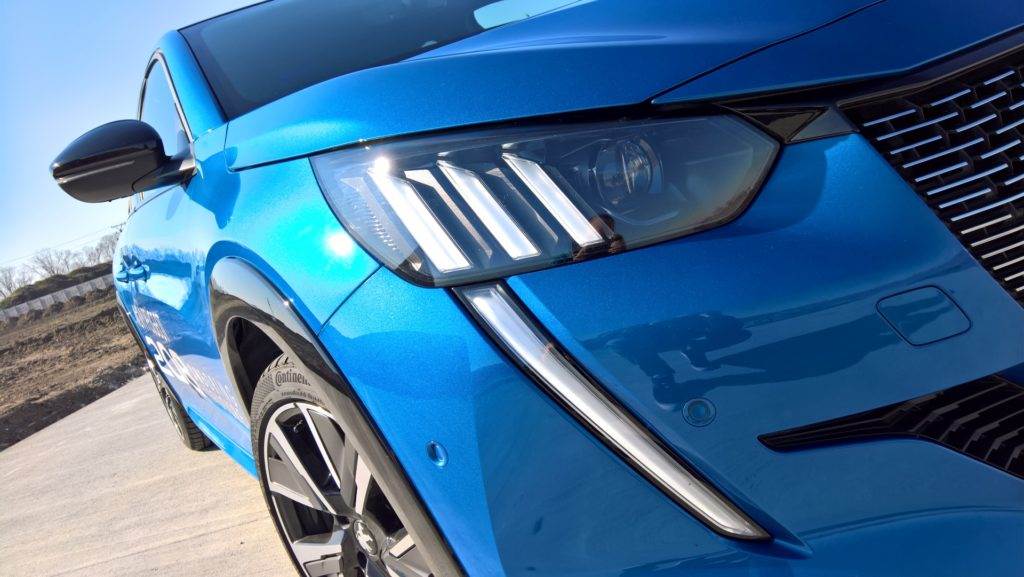
The novelty will certainly immediately attract attention with its unusual design and slightly extravagant French charm. The new 208 certainly cannot be called a dime-a-dozen vehicle, and it relies heavily on style. You just have to pay extra. The basic model does not even offer LED lights, plastic fender edges or the new generation 3D i-cockpit. However, we have all this in the GT Line equipment, so let's take a look at it…
From the front, the new 208 has a similar light signature, which is also offered by the 508 model. The "three claws" make the vehicle clearly recognizable and unmistakable. The front dynamic parts are dominated by a voluminous mask extending deep into the front bumper and a number marking on the top of the bumper (but not on the hood).

The side profile is captured by a relatively long hood, which moves the space for the crew more to the rear, and this part is also dominated by a pair of prominent overhangs. A "plaque" with equipment designation on the C-pillar found its place here, which is a reference to the legendary Peugeot 205 GTi. Another nice element that completes the overall impression of the vehicle are the black painted fender edges. This contrasting black painting then also appears on the other parts and especially on the back…

Lights with the typical light signature for the vehicle must not be missing here. The taillights are effectively connected to each other and create one horizontal element, which, thanks to the already announced black paintwork, effectively contrasts with the vehicle's paintwork – and again refers to the past to the 205 model. A large part of the rear bumper, or a relatively bulky rear door spoiler, is then painted black.
While on the outside the 208 is sleek and slightly aggressive, on the inside it moves to the rhythm of the revolutionary i-cockpit, which has been a traditional point of contention between its admirers and critics for the past few years at Peugeot. The dashboard is optically broken into several units, the instrument panel is stuck out above the small steering wheel, which, on the other hand, sits down. Objectively, this concept takes up more space and makes the interior feel more cramped, but otherwise it is a matter of personal preference.
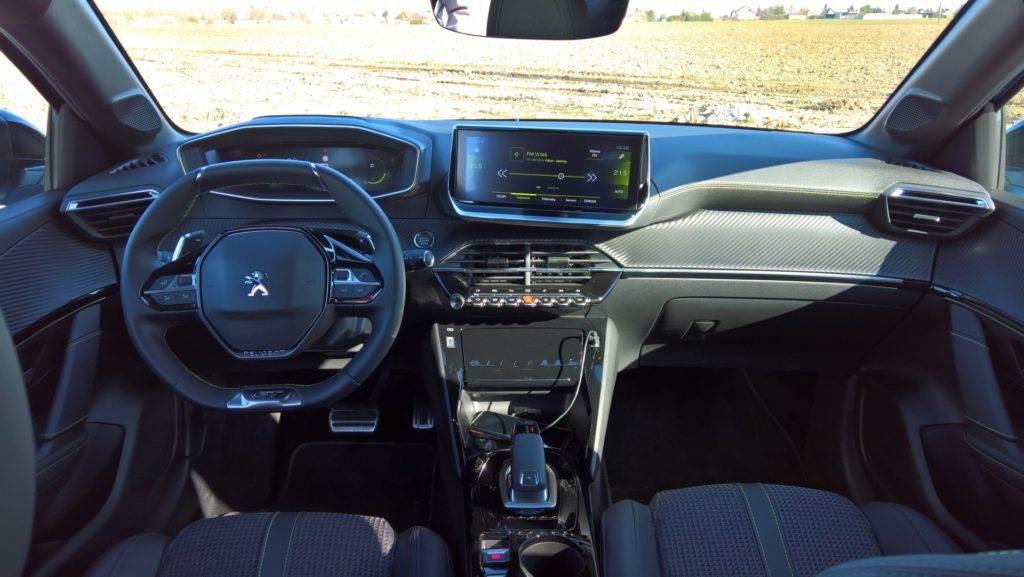
If I speak for myself (height 186cm), I can fold myself into 208 in such a way that I am completely satisfied with the view and comfort. However, I definitely recommend trying the new 208 properly before buying, because the i-cockpit is anything but a universal solution and may not suit everyone.
In the interior, Peugeot managed to create luxury from a practically cheap class. It deserves praise for the materials used, careful processing and great ideas, such as a hinged door in front of the gear selector, which serves as a mobile phone holder, or holographic 3D "alarm clocks" that project important data or warnings closer to the eyes. Only the French can afford such Science-fiction…
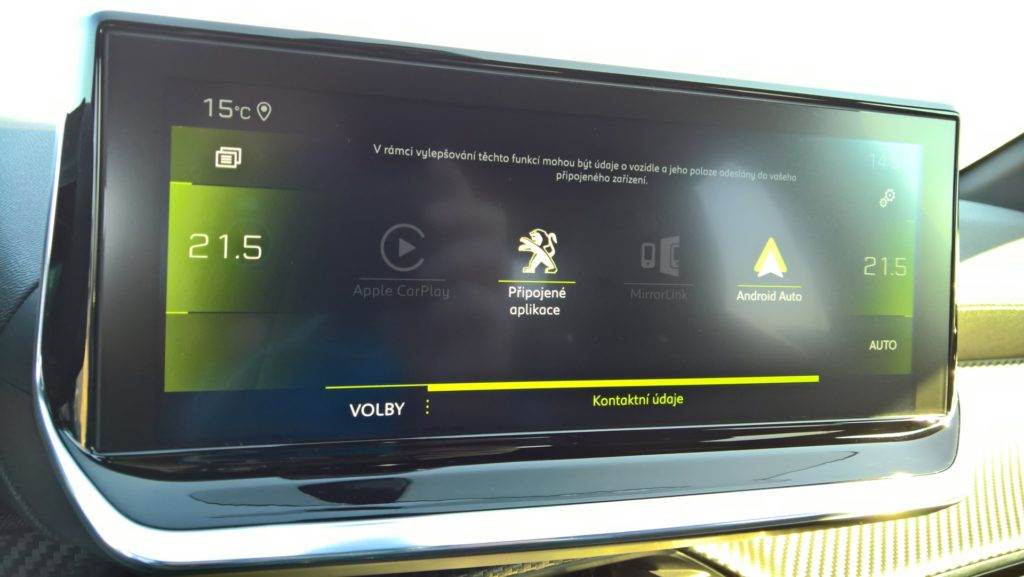
Behind the low steering wheel is an effective and very nicely processed digital instrument panel, in the middle of the dashboard is a display, necessary for additional control of various functions. Individual parts can be selected using the buttons on the horizontal bar, but subsequently require manipulation of the display. It is relatively fast, but sometimes it takes a while to move from one item to another. Overall, the controls are a bit distracting in practice and distract from the steering – buttons are just buttons and simplicity is strength.
We were impressed by the comfortable large seats in the front, which, however, somewhat contrast with the less comfortable seating in the back. Due to the narrow entrance, it is also difficult to get in here and there is more modest space in front of the knees. However, children will also be comfortable here thanks to USB connectivity and tinted windows.
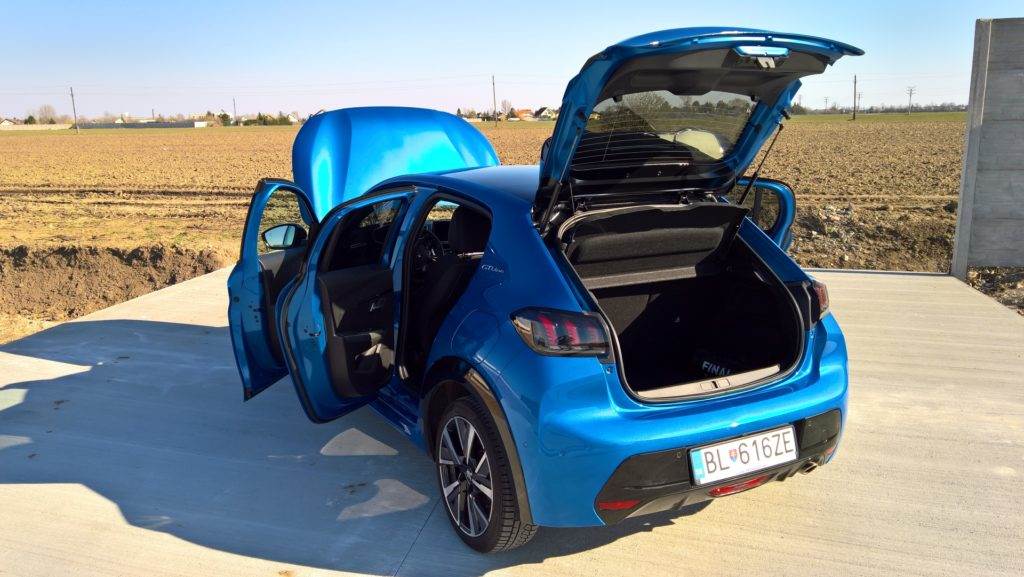
The trunk can hold 265 liters, which is slightly less than its predecessor, but it is sufficient for a city vehicle, and the narrow entrance opening will not allow the transportation of larger items anyway. The Peugeot 208 is now equipped with a number of different assistance systems, including a lane keeping function with steering intervention. To be honest, it's a function that I intuitively turned off, otherwise it makes the already unnatural feeling of overpowered steering even worse. To deactivate it (despite the digital atmosphere on board), the button on the left under the steering wheel is used – thumbs up for that.
The most pleasant specification consists of a medium-powered petrol, i.e. a three-cylinder 1.2 liter with a power of 75 kW (100 hp), with a manual, a more modest central tunnel, a mechanical parking brake, a less eccentric cockpit without holographic devices and with a cheaper multimedia system. This will be the biggest sales in Slovakia and in company fleets, and in our opinion – it is enough, it will not offend, it will serve.
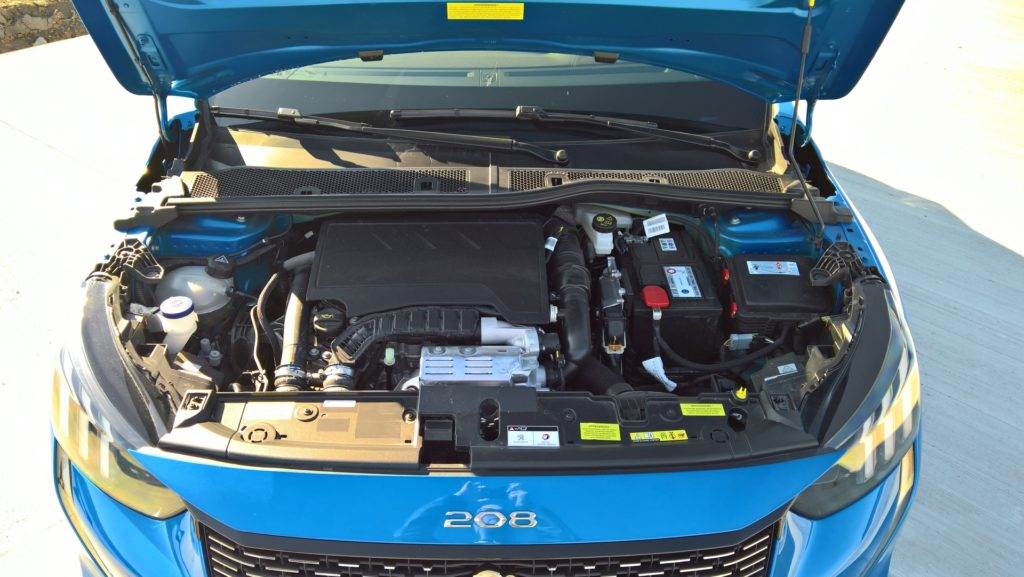
The top-of-the-line GT Line tested offers a range of accessories, including impressive 17-inch wheels, and the 100-horsepower engine is just enough for them. In connection with the 8-speed automatic, which has improved a lot since the last tested 3008, it also surprises with pleasant consumption. It was around 6.5 to 7 liters during the test, depending on the driving style, but it will probably be significantly better in the summer and with a lighter foot.
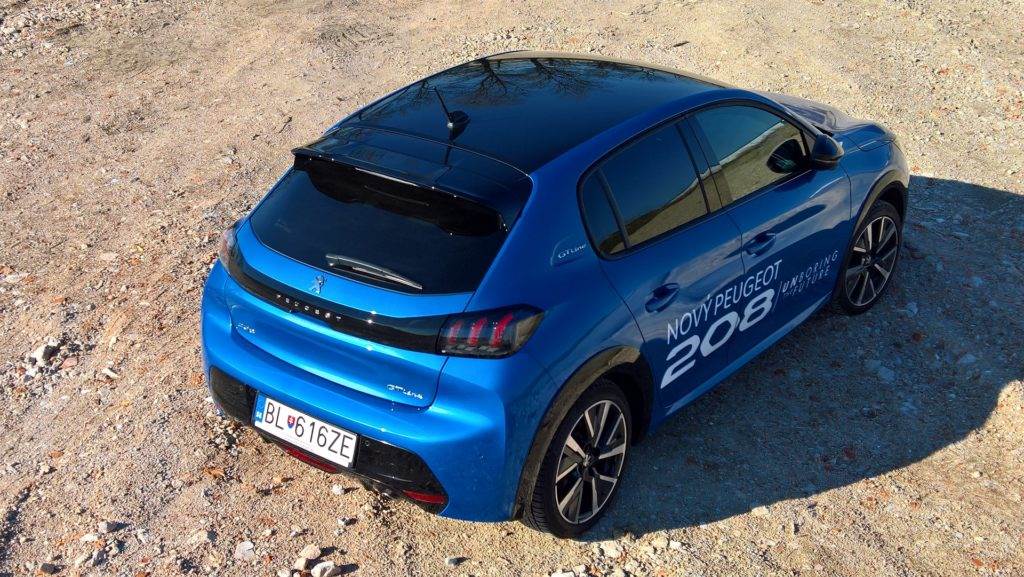
The new 208 has, in spite of being fitted with larger discs, a very well-balanced chassis that can entertain on the roads but also comfortably absorb kilometers on the highway, where it surprises with very good noise reduction. A hundred in 11 seconds and the flexibility of the engine in conjunction with this automatic is the best we have had so far in the given segment and performance category.
The new Peugeot 208 is offered in the basic LIKE equipment at a special price starting at €10,990 including VAT, followed by the ACTIVE, ALLURE equipment and the GT LINE equipment tested by us, which you can buy from €16,990 including VAT with a 100-horsepower three-cylinder gasoline engine mated to a six-speed manual , with an automatic then for €19,190 including VAT. You can then buy the most powerful petrol (130 hp) with an eight-speed automatic from €20,390 including VAT, and an electric car with 136 hp in the GT LINE and GT levels from €31,290 including VAT.
| Technical specifications | Peugeot 208 GT Line 1.2 PureTech 100k EAT8 |
| Engine type: | Spark plug |
| Cylinders / valves: | 3 / 12 |
| Displacement (ccm): | 1199 |
| Highest combined power (kW(k) / rpm) | 74 (100) / 5500 |
| The highest twist. torque benz.mot. (Nm / rev/min): | 205/1750 |
| Gearbox: | 8-st. automatic |
| Acceleration 0 – 100 km/h (s): | 10.8 |
| Combined consumption – WLTP (l/100 km): | 4.3-5.2 |
[rl_gallery id=”8554″]




